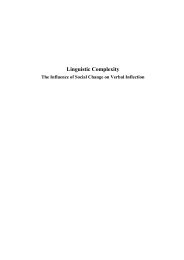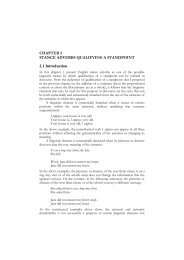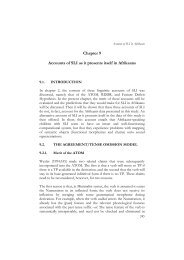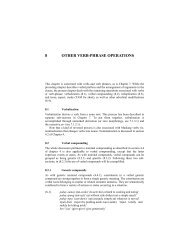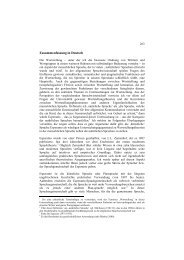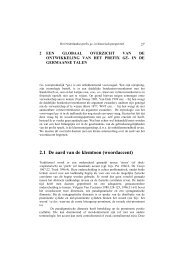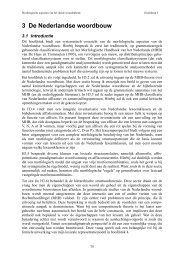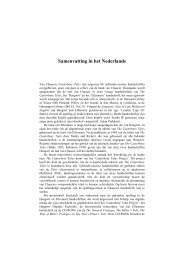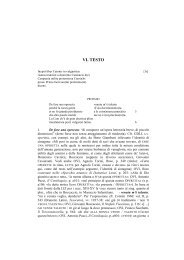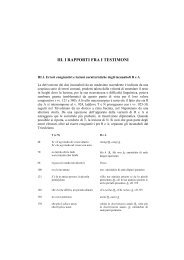Chapter 3 - LOT publications
Chapter 3 - LOT publications
Chapter 3 - LOT publications
You also want an ePaper? Increase the reach of your titles
YUMPU automatically turns print PDFs into web optimized ePapers that Google loves.
58 The putative uniqueness of try<br />
3.1.4 Restrictions on subjects<br />
Conative try constructions seem to require an obligatorily sentient subject. Consequently,<br />
it is incompatible with the expletive subject of weather verbs and with nonsentient<br />
objects such as trees (unless one imputes consciousness to them). This makes<br />
try seem rather more like a SceCo verb (section 2.1.3).<br />
(16) John will try and become a pilot<br />
(17) *I wonder if it will try and rain today<br />
(18) *The acorn will try and become an oak<br />
3.1.5 Semantic bleaching<br />
There does not seem to be much semantic bleaching of try per se. For instance, there<br />
does not seem to be any significant semantic difference between pseudo-coordination<br />
with conative try and the corresponding infinitival construction. The following example<br />
is (2) repeated for convenience.<br />
(19) a. John will try and eat an apple [Conative try]<br />
b. John will try to eat an apple<br />
Moreover, conative try does not seem to exhibit bleaching independently of pseudocoordinative<br />
constructions; in fact, it is not at all clear to me what a ‘bleached’ semantics<br />
of try would correspond to. Given the lack of semantic bleaching, conative try<br />
seems quite similar to SceCo.<br />
Paradoxically, however, conative try contexts are intrinsically different from SceCo;<br />
SceCo implies a sequence of events, where the pseudo-coordinative verb denotes an<br />
event that sets the scene for the main activity to take place. Where conative try is used,<br />
however, the trying event must necessarily be cotemporaneous with the main activity.<br />
In this respect constructions with conative try are like ConCo constructions.<br />
3.1.6 VP deletion<br />
In VP deletion contexts with conative try, it is not necessary that try obligatorily be<br />
deleted with the rest of the VP. This sets try apart from ConCo constructions and<br />
makes it similar to a SceCo predicate (section (2.1.5)).<br />
(20) a. They will try to kill mosquitos and Mary will too<br />
→ ‘Mary will also try to kill mosquitos’<br />
b. They will try and kill mosquitos and Mary will try too<br />
→ ‘Mary will also try to kill mosquitos’



